
I visited Vigan just two weeks ago. My memory and impressions are overall indeed tilted to the positive side. I found it hard to articulate succinctly. Let me just give one point.
In terms of showing information relevant to the visitor clearly, Vigan probably does a marvellous task in one stroke, not often found in Asian towns of Vigan's size. The map produced by the city government is very understandable, helpful, nice looking, convenient. You don't even have to get a paper copy. At the intersection of Crisologo and Liberation there is a very clear map on a wall. Always get back to this intersection and you will find your way in Vigan.
Keep reading 0 comments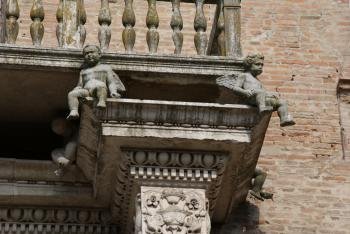
Ferrara is one of my favourite cities in northern Italy, although its buildings and churches are less outstanding compared to other cities such as Verona and Vicenza. The plan of the city and most of the historic buildings date from the 14th and 15th Century, when Ferrara was ruled by the Este family. The historic centre is dominated by the Castello Estense and the Gothic cathedral. The Castello has everything you'd expect from a medieval castle: drawbridges, a moat, towers, a dungeon. But the upper parts were reconstructed in the 16th Century, the battlements were replaced with terraces and balconies. Worth seeing are also the Palazzo dei Diamanti with its exceptional facade of pyramid-shaped blocks of marble (the interior picture gallery is not very interesting), the nearby Palazzo Prosperi with an portico decorated with putti (photo), the Palazzina Marfina d'Este, the Casa Romei, the Palazzo Schifanoia (wonderful frescoes in the Sala dei Mesi), the Via delle Volte, the outside staircase of the Palazzo Municipale, and the Cimitero della Certosa.
We liked best to ride by bike on the city wall that surrounds the whole historic centre and so we explored also the remote parts of the old city. Ferrara is known as a city of cyclists and bicycles are available in most hotels. Ferrara is a university town, and therefore has also a good night-life. If the weather is fine a trip to the Po Delta is worthwhile, especially if you like birdwatching. The best is to rent a bicycle …
Keep reading 0 comments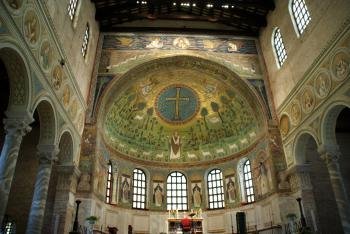
The Ravenna WHS consists of eight early Christian monuments of the 5th and 6th Century: basilicas, baptisteries and mausoleums. Probably the significance of the monuments alone would justify the inscription, because little is preserved from the period between the Roman Empire and the Christian Middle Ages. But the exceptional feature of the site are the marvellous mosaics.
We started our tour, like probably the most visitors, at the Basilica of San Vitale. San Vitale is an octagonal building and has mosaic decorations on the walls and the ceiling. The exceptionally well preserved mosaics depict scenes from the Old Testament and portraits of the Emperor Justinian and his wife Theodora accompanied by their entourage. The mosaics glow in gorgeous colours: blue, green and gold. It is hardly possible to describe how impressive they are and photos can not adequately illustrate their magnificence. You have to see them.
Close to the Basilica San Vitale is the Mausoleum of Galla Placidia. Mosaics cover the entire surface of the vault, the central dome and large parts of the walls. The ceiling shows a deep blue sky with white and golden stars. The theme is the Redemption, Jesus is shown as the Good Shepherd with his sheep, and the apostles are depicted.
Next we went to the Neonian Baptistery near the Cathedral. It is dominated by the large octagonal baptismal font made of marble. The mosaic at the ceiling depicts the baptism of Jesus in the Jordan by John the Baptist. Also the walls are …
Keep reading 0 commentsAssif
Ödön Lechner's independent pre-modern architecture
Ödön Lechner's independent pre-modern architecture (On tentative list)

This nomination includes five buildings three of which are located in Budapest. I only visited two of the three in Budapest and found them both impressive from the outside. I also entered Lechner's most famous building - the Museum of Applied Arts - and found nothing special about its interior. I also know Lechner's Blue Church in Bratislava and find it a shame it is not part of this proposal. I think it too is one of his finest works.
Lechner can be clearly associated with the Judgenstil/Art Nouveau/Secession movement of the late 19th century. Nonetheless, I think he still retained a personal style that be recognized when admiring his buildings.
This said, I don't know how influential or exceptional he was in the history of architecture to make a special nomination for him alone.
Keep reading 0 comments
I attended a conference in Zaragoza and naturally used the opportunity to visit its share of the Mudejar WHS nomination. Three of the inscribed monuments are in Zaragoza and the rest are scattered in other parts of Aragon.
The Aljaferia palace is the seat of the Aragonese parliament and only part of it is open to visitors. What I found most striking was the combination of Moorish architecture with some clear symbols of Islam (such as the mihrab or the Arab calligraphy) and Christian medieval motives in the wooden carved ceilings. It isn't so much a true Mudejar building as this style only evolved after the reconquista and reflected an attempt to combine the Moorish style with Gothic one. The Aljaferia, on the other hand, is one of the only Moorish monuments which survived intact outside of Andalucia and is therefore earlier. Nonetheless, it didn't remain unchanged and the Aragonese princes lived in it and adopted it to their needs. For me it was unbelievable to imagine a Christian prince living in such a Muslim looking palace.
The Cathedral of La Seo is a very impressive cathedral. Its inner centralized nave is beautiful. However, I couldn't see much of its Mudejar characteristics in its interior. Those are evident, however, in the chruch's exterior, mainly from the northern side where you can admire the typical ornaments at the bell tower and its surroundings. The cathedral also features a collection of goblins of world importance that used to hang in the church …
Keep reading 0 comments
I agree with the other reviewers this should have been a mixed nomination. Nonetheless, Hallstatt as a cultural site has a lot to offer too. The current town has some beautiful architecture, but I think its archaeology (the Hallstatt Culture) is what renders it so important. This can be well experienced in the new World Heritage Museum which offers very detailed information about the history of the this place. It also managed to receive back all exhibits from the famous graves uphill that used to be on display at the Vienna Natural Science Museum and are now on display here. You can also visit the graves themselves near the entry to the salt mines. A worthy WHS to visit.
Keep reading 0 comments
On my stay in Weimar we visited the two sites of the Bauhaus nomination that are there: the Bauhaus University and Haus am Horn.
Haus am Horn was built as a model and is therefore very very small. Unfortunately, it was closed so we could only admire the exterior. This was pretty underwhelming, mainly compared with such sites as Tel Aviv or Villa Tugendhat. Maybe a tour through the building would have made it look more important.
The Bauhaus University is, on the other hand, a living building with students and lecturers moving around it. It preserved its original design and I find it worthy of visit not only for historic reasons, but also for architectonic ones.
Keep reading 0 comments
Okinawa sees 3.8 million visitors yearly, but not many of them are foreign tourists. In our ranking of visited WHS this one is at the lower end, sharing its 8 visits with rather remote locations such as Manu National Park in Peru and Konya-Urgench in Turkmenistan.
If you've made it all the way to Okinawa, the inscribed sites are quite easy to visit. Four of them are located in the capital Naha. That's where I started too. The main location is Shuri, the former inland capital which has now been merged with the port city of Naha. Shuri holds 3 out of the 9 WHS locations. Shuri Castle is the main attraction of whole Okinawa, and I encountered lots of school groups there. Here a Gusuku has been fully restored / rebuilt, which gives you an idea of how it functioned.
The Sonohyan-utaki stone gate is located in the same complex and is a strangely mysterious religious site. I was quite captivated by the thought of praying to a stone gate instead of the sacred grove that formerly lay behind it.
Finally, the royal mausoleum Tama-u-dun is a 5-minute walk away. The doors to the burial chambers are forever closed too. What remains is an austere monument, with three sculptured lions located on pedestals guarding it.
In a different part of Naha lies Shikinaen, a garden villa, and a Chinese landscape garden. It's a very serene place (the crowds will not get here), and worth a …
Keep reading 0 commentsSolivagant
Hidden Christian Sites in the Nagasaki Region
Hidden Christian Sites in the Nagasaki Region (Inscribed)
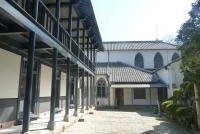
Nagasaki offers a lot to see and we “lost” over an hour going through immigration facilities for a mere 10 hour stay by being bussed from our vessel to another building and then being photographed and fingerprinted! But, in the shorter time left, as well as seeing the atomic bomb sites, the old Dutch island of Dejima, the Glover Gardens, numerous Buddhist and Shinto temples and, of course, the various “interests” to be found in a contemporary Japanese city, we knew that we also had to fit in some visits to the T list site “Churches and Christian Sites in Nagasaki!
However, as Els says in her review below, the UNESCO Web site is very thin on exactly which locations are to be included. So, like her, we traveled “blind” taking in such Christian sites as we could find and as seemed likely to have “inscription potential” - however small!! On our return I carried out a more thorough Web search than I had done before departure and found this detailed Japanese site about the upcoming nomination http://www.pref.nagasaki.jp/s_isan/index.html (definitely have a look at the 10 minute movie).
So, it turns out that there are 26 locations, only 7 of which are in Nagasaki City – and 3 of those are really in the same location at Oura. The other 19 are spread around Nagasaki Prefecture with 7 on the Goto Islands. Of the 7 in Nagasaki City we took in 5 during our day whilst fitting in all …
Keep reading 0 comments
It’s no miracle that only one of our regulars (hi John!) arrived here before me. The Iwami Ginzan (“ginzan” meaning silver mountain) is located on the northern coast of Honshu, in an area without big cities. The shinkansen takes the route along the south coast, swiftly passing this formerly remote region. To reach it, I took a regular train from Okayama to Izumo (3 hours), and then it takes another local train (45 minutes) and a local bus (25 minutes) to get to Omori – the village at the heart of this WHS.
They are prepared though to receive visitors. The lady at the information office at Odashi station came running out to me at the bus stop to supply me with several glossy brochures in English. One of these included an offer that I had not encountered on my travels before: foreigners get a discount! If you show your passport to prove that you’re not Japanese, you get 100-300 Yen off at each of the major sites to visit in the WHS area.
I started my visit at the lower end of Omori town. One of the first older buildings here (the Former Magistrate’s Office) holds the Iwami Ginzan Museum. A 20-minute video in English was started for me. It explained Iwami Ginzan’s history, but quite superficial and I did not get more from it than by reading the nomination file during my preparation. The OUV of the site is a bit sketchy, and ICOMOS had recommended …
Keep reading 0 comments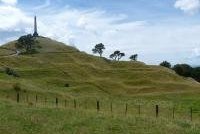
Most countries seem to try to get some aspect of their Capital onto the WHS list if they possibly can. Auckland’s numerous volcanic remains are geologically significant and many of them also have historic value as the location of Maori settlements (or “Pa”) and continue to have cultural value to Maoris to this day. Anyone visiting Auckland should try to take in at least a few of the locations which NZ might one day propose for inscription. It won’t be difficult as some are virtually in the city centre and provide excellent views across this attractively located city as well as being interesting “outings” in their own right for both natural and cultural reasons.
This document provides a comprehensive description of the Volcano Fields nomination as included in the T List (http://www.doc.govt.nz/upload/documents/getting-involved/consultations/consultations-results/our-world-heritage/our-world-heritage-6.pdf ). But it is worth noting perhaps that the site is currently 7th in sequence for nomination amongst the 8 currently on NZ’s T List – behind Kerikeri and Waitangi which we also visited during a short visit to NZ during 2012 (see my reviews) . Whether this is due to concerns about its viability as a nomination or because of the work which still needs to be done isn’t clear. It is noteworthy that NZ hasn’t made a single nomination since it registered its revised T List back in 2007 and, before that, had made no proposals since the successful nomination of its sub-Antarctic Islands as long ago as 1998. This web site - http://www.doc.govt.nz/getting-involved/consultations/results/nz-world-heritage-sites/ states “It …
Keep reading 0 comments
During my 2 weeks trip to Sweden and Finland, I saw two industrial World Heritage Sites, one is Ängelsberg Ironworks, and the other is the Great Copper Mountain in Falun. While Ängelsberg was so scenic with beautiful lake and forests, on the other hand, Falun really showed the result of heavy industry and pollution from copper mine. When my train approached the city of Falun, a part of inscribed area, I was surprised with the quietness of this city; there was no passenger apart of our group in the train station and nearby bus station! I took a bus to the Falun Mine; the bus route passed the city center which was quite pretty with some beautiful buildings and a lovely canal park.
The bus took us to the rear entrance of the mine; the first view of the mine, which was the oldest mining company in the world since 1288, was the very big wooden figure of Kåre goat, a legendary goat that found the copper ore, in the large area of red devastated land with spoil tips, totally not a place for casual tourists. After many spoil tips and my friend’s white shoes become red-brown shoes, I finally saw the Great Pit, and this huge red pit was pretty amazing sight. I walked along the rim of the Great Pit to see many mines’ wooden facility buildings painted in red color, or to exactly called Falun Red, a Swedish classic red color that found everywhere which originally …
Keep reading 0 comments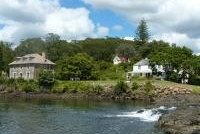
Kerikeri Basin contains a number of sites representing the “early period” of contact between Maori and Pakeha dating back to 1819 when a mission was first established there. It is beautifully situated in a lush valley with a small waterfall and well worth a visit by anyone traveling in the Bay of Islands area.
A few miles away from Kerikeri during the 1820s and 30s the port of Kororareka (present day Russell) was known as the “Hell hole of the Pacific” for its lawlessness, prostitution etc. The trade in muskets from such places by the Maori led to devastating results on the tribal balance and terrible wars. At the same time, in nearby places like Kerikeri, European missionaries were trying to bring law and order to the area and benefits to the Maori in terms of agriculture, literacy and an end to their practice of slavery and cannibalism – leavened of course with a good dose of Christianity!
We saw 2 of the 4 locations listed on the UNESCO Web site as part of this T List site plus others. The Mission House built in 1822 is NZ’s oldest building and the nearby “Stone Store” was completed in 1836 (its lintel has the date “1833”). The Stone store is still run as a “store” downstairs, aimed at tourists but selling items which are appropriate to its history (e.g cooking pots!). The upper floor is a small museum. Higher on a hill above the wharf is the church of St James …
Keep reading 0 comments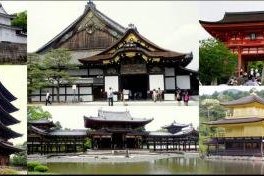
Kyoto has been the capital of Japan for almost 1000 years and still remains the cultural center of the country.
I have spent 4 days visiting Kyoto amazing world heritage listed buildings. I have visited 11 sites out of 17. Among them, those that really astonished me are Nijo jo castle with its imperial palace, full of decorated rooms, Kinkaku ji with the Golden Pavilion and To ji with its 5 story pagoda which is the tallest one in Japan. Kyoto is the heart of Japan and houses some of the finest testimonies of ancient Asian architecture with its shrines, temples, palaces and zen gardens. The place is amazing and full of splendorous treasures.
The image shows Nijo Jo castle (exterior white fortifications and interior buildings), Kiyomizu Dera entrance gate, To Ji pagoda, Byodo In temple and Kinkaku Ji Golden Pavillon.
Keep reading 0 comments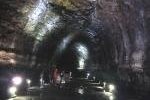
Another day, another island on our RTW cruise – but this visit to Jeju was more critical than most as it offered the promise of a completely new WHS after a long period of “revisits” since Rapa Nui on the other side of the Pacific! With just 9 hours ashore we somewhat reluctantly decided to use a standard tour which promised to take in 2 of the 3 elements of the inscribed site, together some more of Jeju’s delights!
The big worry was whether the tour would give us enough time at our priority sites and after visits to a crater, a folk village and a resort it was after lunch before we reached the Seongsan Ilchulbong tuff cone, otherwise known as “Sunrise Peak” (Our lunch by the way was served in the visually stunning “Glass House” by Tadeo Ando – well above the normal quality of restaurant used for tourist groups around the World but it was a pity we couldn’t also take in his “Genius Loci” or the interior of Botta’s “Agora” at the same Phoenix Island location!). We were then presented with an option – either go to see the Haenyeo diving ladies whose “show” commenced at 1.30 or climb to the top of the crater – in either case we would leave in 1 hour and it was now 1.05!!
Well there was no alternative of course but to try for both - and it was well worth doing so too. Seongsan Ilchulbong is often described …
Keep reading 0 comments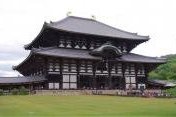
Nara was the first capital city of Japan, in the early 8th century, after the title was moved to Kyoto. However, the city kept its important cultural status in traditional Japan. I have spent three days visiting the numerous marvels of the town.
The Todai ji, a huge temple 56 meters high that houses a huge bronze Buddha statue 16 meters high, is the main attraction. The place is amazing by its greatness and the beauty of the detailed decoration it welcomes. The building deserves the attention it is given.
Very close is Kofuku ji temple with its famous 5 story pagoda, the second tallest in Japan after the one of To ji in Kyoto. While walking in the street and within this temple, you can see and caress the numerous deers that have been living freely in the city for centuries. Their existence is due to the fact that centuries ago, it was decided by one of the leader of the place that deers would not be killed anymore and would be venerated.
Among the other places of interest, we have Gogu ji temple with its Hondo, main hall, and its roof where some part parts are covered with the oldest tiles and the Yakushi ji temple with its colorful buildings.
Keep reading 0 comments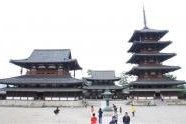
On my trip to Kyoto and Nara, I spend a half day visiting Horyu ji area. This complex and the buildings it comprises are considered as the oldest wooden building in the world. Erected during the 7th century, the main elements are the 5 story pagoda and the Kondo, the Golden Hall. Within one of the three parts of the complex is located a museum that displays a wealthy collection of old artefacts. Within the Golden Hall, a big sculpture in wood is erected. This site bears a great and unique testimony of the architecture in the early Japanese times.
Keep reading 0 comments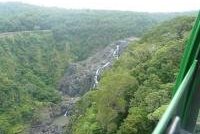
With a day to spare in Cairns it was a toss up between a trip out to the Barrier Reef or to the Wet Tropics. The latter WHS was the one I felt I had seen less well on a previous trip so we booked ourselves a return trip to Kuranda – out by the Skyrail Cableway and back by the Scenic Railway. The ticket was an eye watering 101 AUD (c80 Euro) – by doing the trip as 2 singles on each mode of transport we lost the benefits of return ticket prices which would have reduced the cost a bit – but not by much!
Unfortunately the “Wet Tropics” were living up to their name as we took the cableway from its starting point a few kms north of Cairns. I can’t say I found the trip that worthwhile – ok it was going over (and at times as we climbed – among) the trees and one could make out different species and see the epiphytes and a few birds but I am not sure that all that technology really enabled one to gain a better feel for the “forest”. The cars moved at a fair speed but there were 2 stopping points to change cars which also had walkways to enable one to “experience” the forest from below. The walkways were exceedingly short. At the first stop there was a park ranger who led a “guided walk”. I am still a bit surprised at how poorly this …
Keep reading 0 comments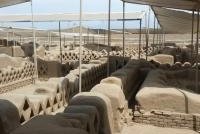
Chan Chan was a site we had long wanted to visit but, when it came, the “reality” didn’t, for a number of reasons, quite live up to the “vision”! One’s image of unvisited places is often built up in subliminal ways and mine I guess came largely from a 1972 book “Monuments of Civilisation – The Andes” whose photos showed a “remote” ruin devoid of modernity, stretching as far as the eye could see. The reality today is a complex of posts and protective roofs(Photo)with smooth “replastered” walls/decorations and entrance limited to just one part – the so called Tschudi Palace (or “Nik-An”) which is just 1 of 9 (or 10 - see later) such “palaces” thought to be 1 for each Chimu king (and there are vast areas beyond the main compounds of workshops, lesser housing and other monuments). The site also perhaps suffered in comparison with Huaca de la Luna which we had seen in the morning. The lively polychrome frescos there made the artwork at Chan Chan which consists of moulded and stylised creatures/shapes in grey mud look very dull! Back home, however, the site’s significance and value seems somewhat greater. Despite the downsides, it is one of the world’s great archaeological sites and a visit should be undertaken by anyone interested in archaeology.
The site suffers just about every preservation problem one could imagine – erosion by wind and rain, ground water ingress, looting, squatting, farming, road building, rubbish dumping etc. As we …
Keep reading 0 comments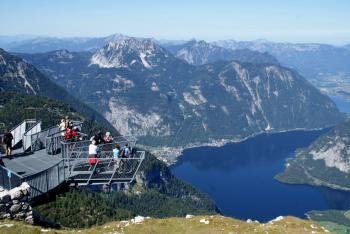
The scenic landscape of Hallstatt, the lake and the surrounding mountains is really marvellous. The architecture of the town with its boathouses can be viewed best from the lake, either with a boat trip or from the ferry to the train station on the opposite shore of the lake. The ascent to the Rudolf tower is also rewarding: You have a wonderful view over Hallstatt, the lake and to the Dachstein massif. You can walk or ride up with a funicular. Not far from the Rudolf tower is the entrance to the salt mine, the oldest salt mine in the world. The highlights here (not only for children!) are the miners' slides, one is 64 meters long. And of course, do not miss the Beinhaus (ossuary) next to the parish church Maria am Berg.
The beauty of the town and its spectacular location at the lakeside was extensively described by the previous reviews. But the WHS also includes the Dachstein massif and the large cave system. Three caves can be visited, each is of a different type: the Ice Cave with fascinating ice formations, the Mammut Cave with rock formations in different colours and the Koppenbrüller Cave in the valley, a stalactite cave. Especially the Ice Cave is worth a visit, the tour lasts 50 minutes.
If you stay a few days in Hallstatt, you should make a trip to the Dachstein massif. A cable car runs in three sections to the Dachstein mountain plateau. At the upper station of …
Keep reading 0 comments